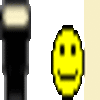I think February 13th, 2010 may well come to be seen as a watershed for Irish rugby in a similar vein to Twickenham in 2000. Back then we saw a team sent out to be lambs to the slaughter. A very conservative selection policy, reminiscent of Declan Kidney’s selection this time, was invoked, backed up by the sycophantic media pundits of the day such as Edmund van Esbeck, Mick Doyle and indeed George Hook. It proved to be a disaster. We saw Conor O’Shea and Tom Tierney play their final internationals. Ironically one of the victims of that game was a 20 year old Bob Casey, who will freely admit he was not yet at the level to challenge the likes of Martin Johnson and Lawrence Dallaglio but was thrown in into a very very deep end in which he had little chance of swimming. Sadly that match has always been unfairly held against him.
After that humiliation, there were eight changes I think, and Ireland went on to beat Scotland 44-22 the next day out. Michael Galwey returned as pack leader and captain at 33 years of age on the back of fine European Cup form. Denis Hickie, inexplicably left out of the ’99 squad, made a wonderful return to the wing while Peter Stringer and Shane Horgan also breathed new life into the back line.
Yesterday, ten years on from that debacle, will hopefully prove to be another watershed.
The circle has turned fully and Bob Casey is now in the position that Michael Galwey was in ten years ago, but with the added bonus of being three years younger. He must now come in as pack leader if we are to have any hope in Twickenham in two weeks time. Cullen and Casey look the stand out choice at second row leading up to New Zealand 2011, with the untested Donncha Ryan deserving of a chance at some stage. The Stade de France humiliation, if examined forensically, should see the end of the international careers of Ronan O’Gara, Tomas O’Leary, Paul O’Connell and John Hayes. Hayes particularly, and O’Connell to an extent, can leave the international scene with their heads held high, while O’Gara and O’Leary can leave in the knowledge that they remain an option for their province. The talented Keith Earls, while he should not be discarded on the proviso that he grows a few centimetres, has fallen down the pecking order behind Shane Horgan and Andrew Trimble.
Paddy Wallace, despite my earlier doubts, has proved a competent replacement in recent times and in my view has secured the right to be back up to Jonny Sexton, while Tom Court’s claims in the front row will be very difficult to refute. A real shake up similar to what happened after Twickenham ten years ago is needed if this Irish team is to have a chance of making an impact on the rest of this Six Nations and the period up to the 2011 World Cup. Let’s hope this Irish management team will be brave enough to implement it. However, going on their previous selection form, I look forward more in trepidation than optimism.

